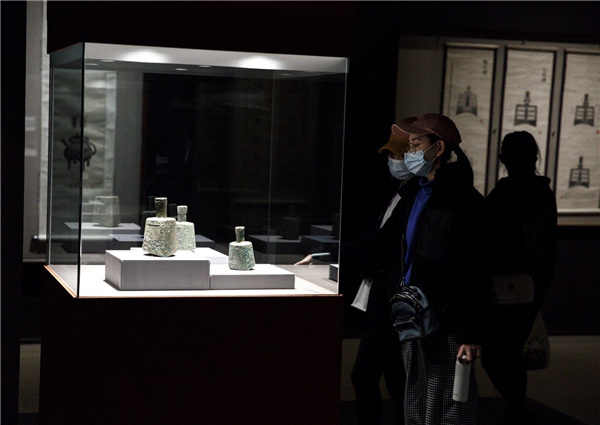 |
|
Visitors look at bronze cymbals of the Shang Dynasty (c.16th century-11th century BC) at the museum. [Photo by Jiang Dong/China Daily] |
More importantly, the exhibition pays tribute to Rong's selfless donations throughout the decades of his art, antiques and ancient books to public museums in Beijing and Guangzhou, where he worked for years, and Dongguan his birthplace in Guangdong province.
After Rong died, his family bequeathed more of Rong's collected items and documents to museums, universities and other cultural institutions.
Rong obtained a bachelor's degree in Chinese studies at Peking University. He later taught at prestigious schools including Yenching University, Peking University and Sun Yatsen University in Guangzhou, where he co-founded a paleography institution in 1956, the first of its kind in Chinese higher education.
Rong built a reputation amid academic circles for his connoisseurship of ancient art and his in-depth studies of the characters inscribed on the oracle bones and ancient bronzeware that he collected.
His collection of rarities include a bronze fou jar inlaid with gold. It dates back at least 2,200 years and bears two characters luan shu, which is believed to be the name of a senior court official at the time it was made.
It cost Rong a large sum of money to buy the jar from an antique dealer, which he described as "a bold, extravagant deal", and he said "the jar is inlaid with 40 gold characters, a sole example of its kind, and whoever owned it was extremely well positioned".
The jar is now in the collection of the National Museum of China. Together with two rubbings of the inscribed writings, it is on display at Mr Rong's Great World exhibition.